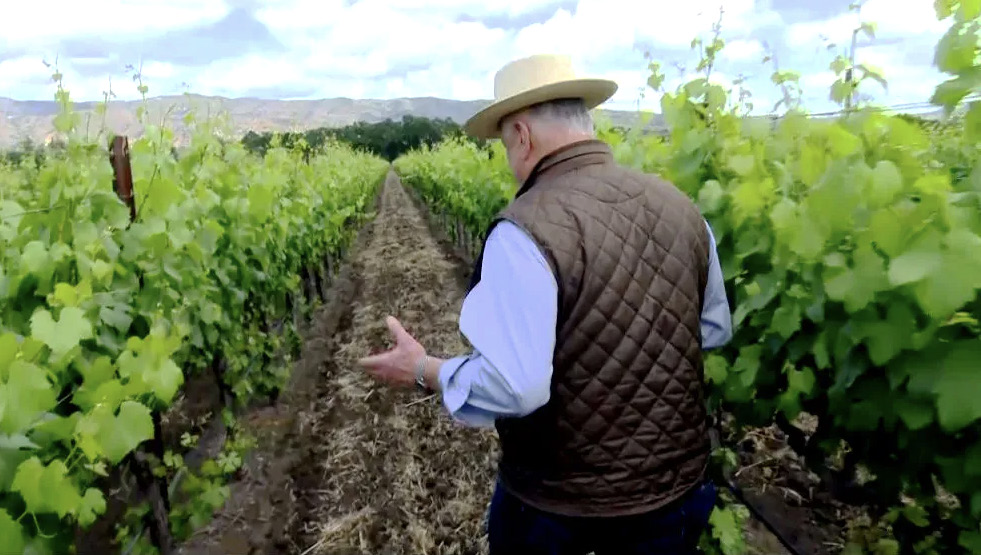Shifting Climate, Extreme Weather, Wildfires, Demand for Housing, Water Scarcity and Drought
One of my favorite quotes about farming comes from a fellow grape farmer and good friend, Stu Smith of Smith Madrone Vineyards on Spring Mountain, nearly 2,000 feet above the valley floor.
Stu says, “Being a farmer, you have to be an eternal optimist but at the same time you have to be an eternal pessimist. So, it is these two emotions that are driving you, and in conflict within you, that you have to live with.”
When visiting with guests at the winery, I find myself complaining about the du jour weather-related factors affecting the crop. Perhaps complaining about weather is part of the DNA of a farmer, and there is good reason for this, as weather plays such an important part in the growing of grapes and resulting wine quantity and quality. The frustration that plagues farmers is that weather is out of our control, and this is mostly true, but not completely. More about this later. For now, let’s discuss what is happening with climate in the Napa Valley and other extreme weather and economic conditions.
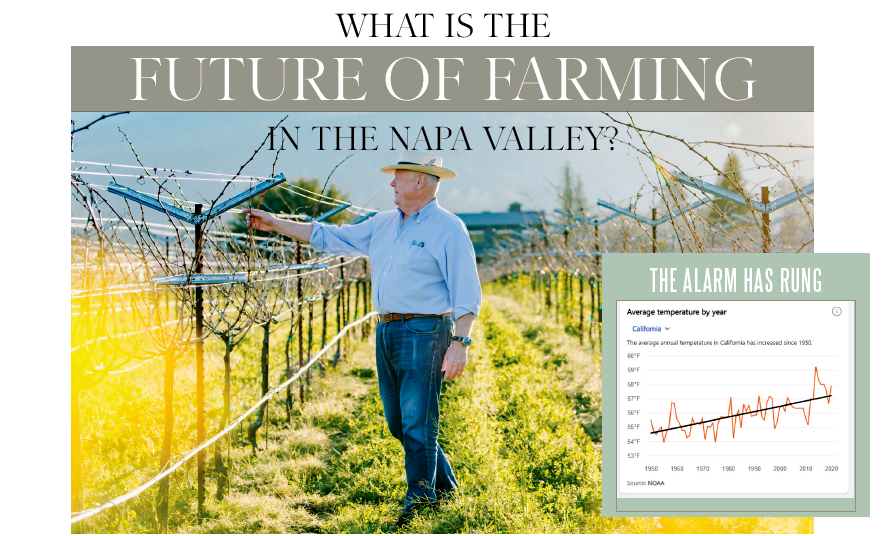
The planet is getting warmer.
The last 7 years have been the warmest since record keeping and 2020 tied for the hottest year on record. In North America, June 2020 was the hottest month on record. Andrew Isaacs, Professor of Technology Programs, Haas School of Business, Berkeley, and former Senior Scientist at NASA, says climate is travelling at 1 km per year in the Napa Valley.
What does this mean?
It means that each year, as you drive from south to north in the Napa Valley (Napa towards Calistoga) the weather is getting slightly warmer. It is not a perfectly linear as you move north, as individual sites vary in temperature depending on orientation and site specifics, but in general it is a good description of what is happening with the climate. This data is important, in that specific varieties do best when matched to the ideal growing conditions, which considers mean degree days of heat. Could this mean that one day the Carneros region, best known for cooler conditions that favor Chardonnay and Pinot, could be better suited to warmer varieties like Cabernet and Zinfandel?
Could Rutherford and St. Helena become too warm for Cabernet? Yes.
High-quality wine grapes are naturally adaptable to heat stress if managed correctly, as grapes like to grow in a warm, Mediterranean climate, but at extreme temperatures, heat can cause grapes to shrivel and turn to raisins.
Wildfires and resulting smoke damage to grapes and resulting wines have affected every vineyard and vintner in the Napa Valley. Virtually no Cabernet Sauvignon will be made from Napa Valley grapes in 2020 because of smoke damage from the wildfires. Estimated economic damage from just the 2020 wildfire season to the Napa Valley wine industry alone is estimated to be more than $2 billion. With a warming planet, it is easy to become pessimistic regarding our predicament, as a quick fix is not possible.
I believe the biggest threat to our livelihoods as wine growers is water scarcity.
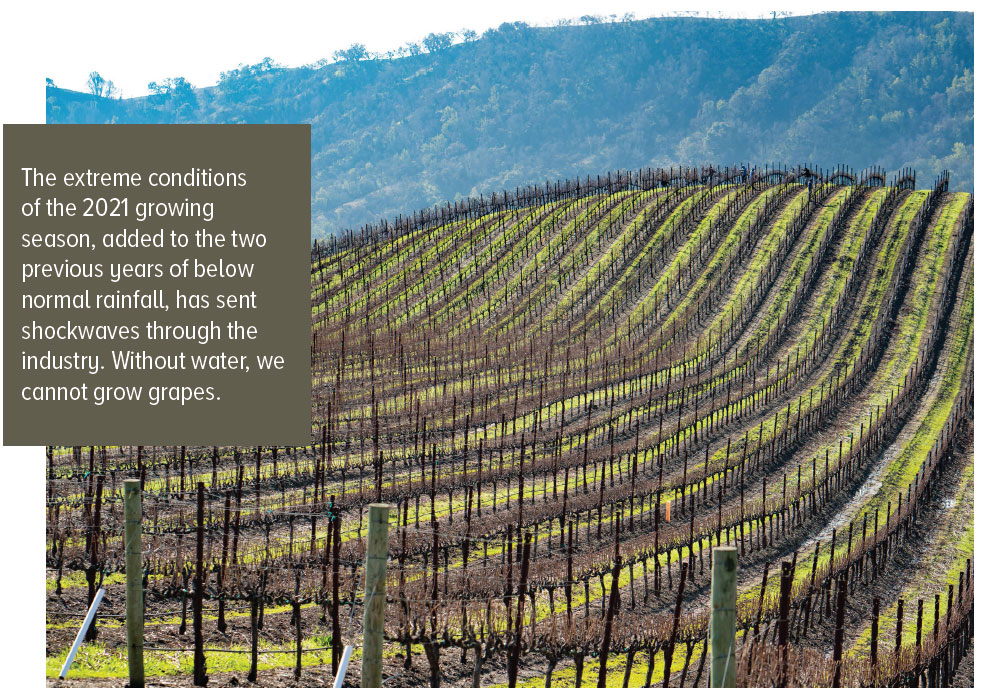
For the first time in my 41-year career in the industry, we ran out of water at two of our ranches in the Napa Valley and had to truck re-claimed and municipal water, at an expense approaching $250,000, just to save two-thirds of our crop. Some farmers dropped all their fruit and used the little water they had just to keep the vines alive (vines carrying a crop require more water). Grapes are plants and need water, especially when they are young and root systems are not established. Drought in California is nothing new and we have made excellent wine in drought years, but limited water is not the same as being out of water.
The future of farming in Napa is further endangered by state-mandated housing requirements that are spilling beyond our cities and threatening the once sacred agricultural boundary lines. McMansions, huge 10,000 square foot+ homes with large outdoor entertainment spaces, are encroaching on valuable Ag lands – reducing future vineyard plantings. Additionally, it is becoming nearly impossible to plant new vineyards on lands zoned for agriculture, as the cost and time of conducting environmental studies and obtaining the necessary state and local permits required to plant a vineyard favors only the very wealthy.
It is becoming evident that one of the most famous and desirable locations in the world to grow world-class wine is in jeopardy of its existence.
What can we do?
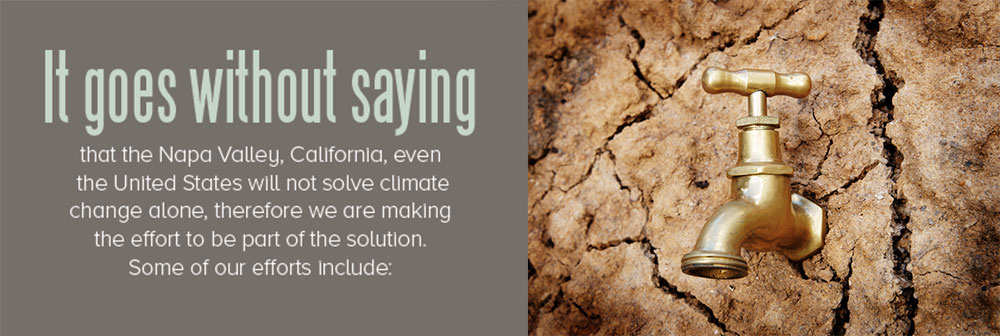
1. DROUGHT TOLERANCE
❉ Vines and cover crops that are planted between the vine rows compete for water during the growing season. During drought years, we disk between the rows during the growing year to eliminate the competition, giving all the available moisture in the soil to the vines.
❉ Redeveloping our trellis systems to provide more shade for the fruit during the hot summer days.
❉ Dry-farming vineyards, that is farmed without irrigation, as was done in the early days of the Napa Valley. Once vines are established, it is possible that some vineyard sites have water sources down deep, and eventually the roots find these sources, as deep as 50 feet for more. Our Dry Creek, School House Old-Vine Zinfandel is completely farmed without adding irrigated water. These old vines found an underground spring of School House Creek!
❉ When we redevelop or plant a new vineyard, we search out rootstocks that are drought-resistant, and can survive with less water.
❉ We have begun working with a partner that has developed an irrigation model through extensive research in both California and France that pinpoints the best time to water that will accelerate vine growth early in spring and push fruit to an earlier ripening that would improve fruit quality and quicken harvest by nearly 30 days, while minimizing the risk of smoke taint from wildfires that typically happen in late Fall.
2. REDUCING OUR CARBON FOOTPRINT
Anytime we reduce tractor passes in a vineyard, we reduce CO2 released into our atmosphere. Electric tractors have already made an appearance in the Napa Valley, but more work needs to be done to improve performance. Vineyards are naturally a carbon sink, in that carbon is reduced over time by farming as compared to development and housing.
Back in 2007, we installed solar on the roof of our wine warehouse and plans are underway to install more throughout the property.
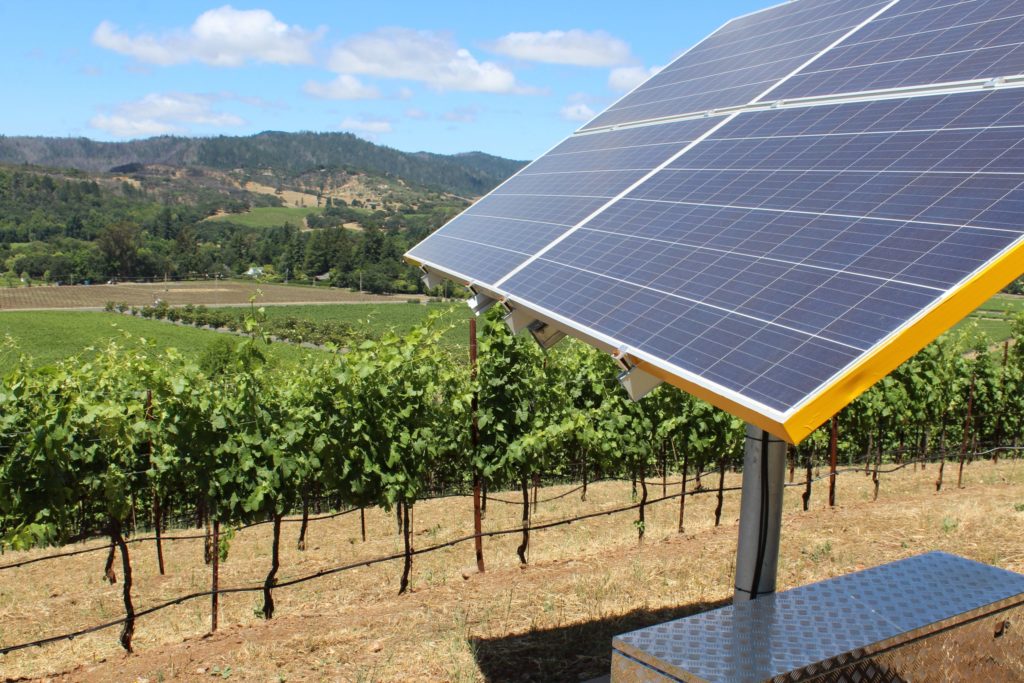
3. FIRE MITIGATION
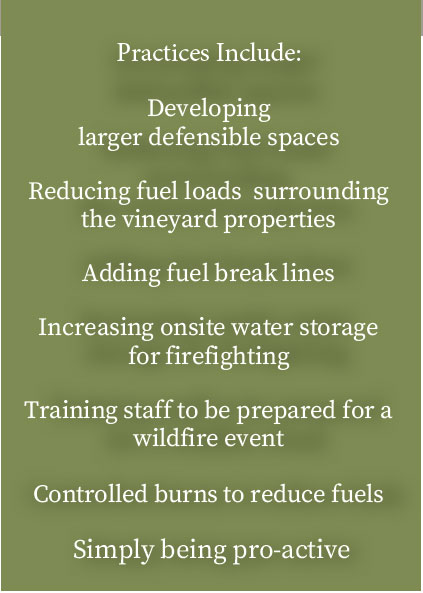 Here, we are making great strides. Industry groups such as Napa Valley Grapegrowers are leading the charge to help farmers with best practices to mitigate fire losses.
Here, we are making great strides. Industry groups such as Napa Valley Grapegrowers are leading the charge to help farmers with best practices to mitigate fire losses.
❉ What hurt most in the 2017 and 2020 wildfires was that we were not prepared and relied too heavily on firefighters that were stretched to nearly the breaking point, as fires raged throughout the state.
❉ We are a strong agricultural community where grapes have been grown for more than 150 years. We have survived floods, earthquakes, Prohibition, and numerous other disasters.
❉ Climate change, wildfires, economic threats, and water scarcity are all worthy adversaries, and will challenge us, but will not beat us.
We have too much at stake
to give up on the bounty and beauty of this magnificent valley. As farmers and eternal optimists, we believe next year’s harvest will be the best ever!
Tom C. Davies
President

Did you know there is an island of plastic trash in the Pacific Ocean three times the size of France?
8,000,000 metric tons of discarded plastic finds its way into the ocean EVERY YEAR. That is the equivalent of setting five garbage bags full of trash on every foot of coastline around the world. Plastic production rose from 2.3 million tons in 1950 to 448,000,000 million tons in 2015. Production is expected to double to 896,000,000 tons by 2050. Half of all plastics ever manufactured have been made in the last 15 years. Plastic has a very long life. It contains additives which makes it unable to break down for 400 years or more. Today, landfills are overflowing with waste plastic. China is now refusing to take our unwanted plastic to its country as it did several years ago.
Plastic “trash” is killing sea life and birds and poisoning our food and water supplies. “If plastic production isn’t curbed, plastic pollution will outweigh fish pound per pound by 2050,” declares World Economic Forum Report. THIS IS AN ALARMING PROBLEM.
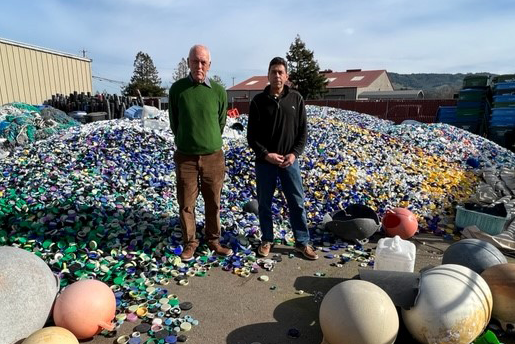
Action is required. It is in this spirit I have invested in a company called Resynergi of Santa Rosa, California, which will take most discarded plastic and turn it into energy or chemicals for making new virgin plastics without harming the environment. This process is called CMAP, Continuous Microwave Assisted Pyrolysis. Discarded plastic is collected and heat of 1000 degrees Fahrenheit is applied – in an oxygen free environment – causing the solid material to form a gas. The gas is cooled into a liquid product (fuel) or made into new plastic.


